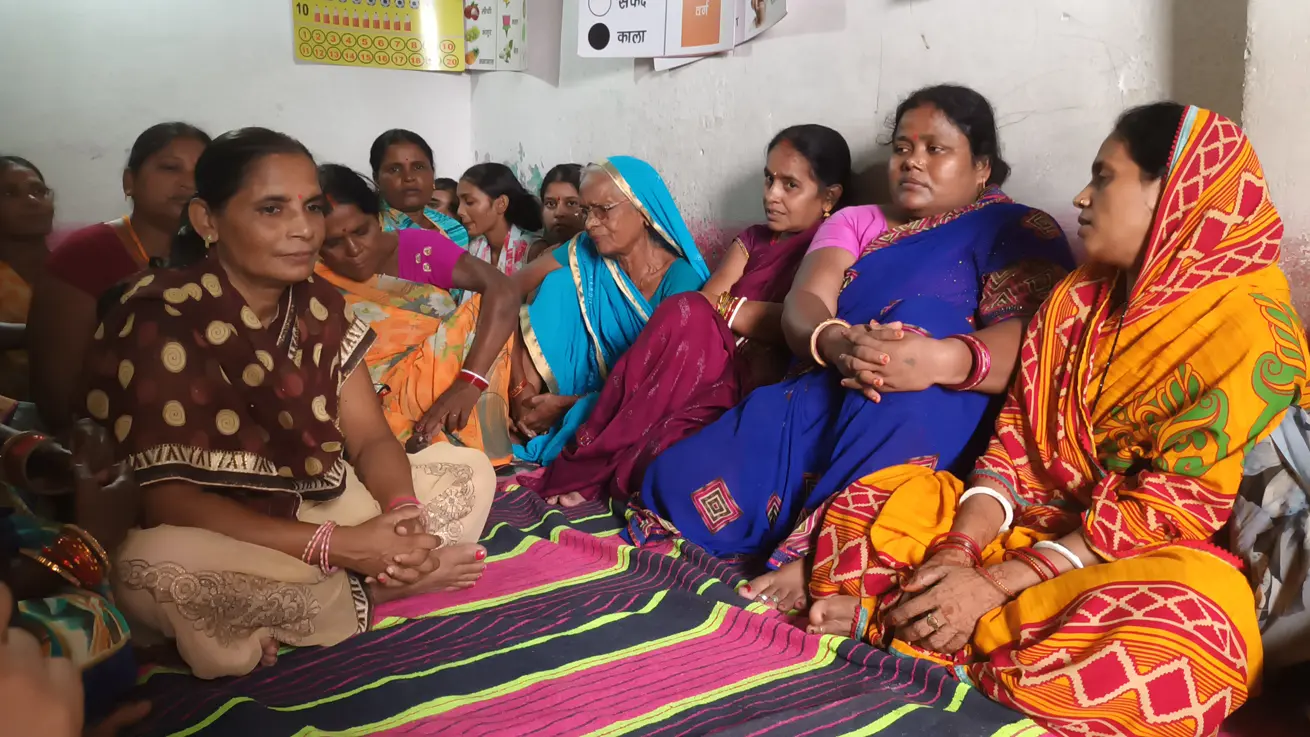When the Right to Education (RTE) Act came into force in 2009, it was celebrated as a landmark step in India’s journey towards equity and justice– guaranteeing free and compulsory education to all children aged 6 to 14. In villages across Bihar, this has meant that most children now have a school building nearby and the legal right to attend it. But more than a decade later, conversations with local communities across Muzaffarpur, Sheohar and Patna reveal that the story of RTE is still being written– and its meaning must evolve far beyond mere access.
RTE as a Right TO, IN and THROUGH Education
To truly uphold the spirit of RTE, we must see it not as the end– the mere presence of a school– but as the beginning of a child’s right to thrive in and through education. This means not just enabling the access to schools by improving proximity to and enrollment in schools, but improving what’s happening in the schools– providing quality teaching and learning experiences in the classrooms, safe and inclusive environment, and fair treatment irrespective of caste, class or gender. The right also involves what children get through schooling- genuine growth in knowledge, secondary schooling, vocational education and employment.

The lived experiences shared in recent Shiksha Chaupals make the gap between RTE and reality visible. Shiksha Chaupals are gatherings of men, women, youth and children with the aim of uncovering community-level barriers to schooling and identifying solutions in their locus of control to overcome these barriers. Community members gather in village offices, front yards of homes, goat sheds, and other common areas to give voice to the challenges and experiences of schooling in their local context.
Despite schools existing in most hamlets, parents in Muzaffarpur and Sheohar spoke of classrooms where teachers do not teach well, forcing them to pay for private tuition they cannot afford. Across 5 Chaupals in Muzaffarpur, Sheohar and Patna, community members shared that discrimination based on caste and poverty persists in the community as well as in schools. Teachers and peers reinforcing low expectations, with one participant sharing: ‘They think we are poor, so we won’t achieve anything.’
In Munni Baingari, Muzaffarpur, the Mushahar community expressed their resignation to the status quo: “No real help comes—people just take pictures and leave.” The challenges vocalized by the community highlights the failures of RTE, which merely stops at the provision of schools and not fundamentally changing anything that transpires within it. These are not failures of individuals but of a system that has stopped short at access, without fulfilling the broader promise of education as a tool for dignity and mobility. This points to the urgency to make this fundamental right a ‘lived reality’ beyond the gates of school.
Role of Parents and Community– Improving the Demand Side
Another critical concern is the lack of community awareness of what constitutes the Right to Education. Community members are largely unaware of what should happen inside schools and what really happens. A fundamental right is meaningful only when people know they have it– and feel capable of claiming it. But who is responsible for ensuring this awareness?
Parents undoubtedly have a stake. Their engagement– attending parent-teacher meetings, asking questions, supporting learning at home– is critical to improving school quality. Yet, many parents in rural Bihar see education as the school’s sole responsibility. Poverty, illiteracy, and daily survival leave little room to monitor what happens in classrooms. In one village, several parents admitted they were unaware they could even enter the school and meet teachers.
This raises a larger systemic question: if structural barriers prevent families from knowing or acting on their rights, who must enable the shift? Bihar’s frontline workers– particularly Vikas Mitras, Tola Sevaks– have crucial roles to play in spreading awareness of the Act, improving enrolment and retention, and procuring necessary entitlements such as birth certificate, Aadhar to enrol in schools. But they too operate under constraints. Vikas Mitras, for instance, often cover multiple villages and juggle responsibilities spanning education, health, livelihoods and even election duties. As one Vikas Mitra candidly shared, “I want to support families with school issues, but I have multiple mandates and multiple hamlets to go to.”
The lack of clarity about ownership– of who ensures awareness, positive perceptions and accountability– is a weak link in the RTE chain. Strengthening this loop is essential, not just through policy, but through everyday practices that bring institutions closer to people.

Shiksha Chaupals as a First Step towards Awareness and Accountability
Community participation is the bridge between awareness and accountability. The Shiksha Chaupals are an attempt to build that bridge– creating spaces where communities, especially women and youth, come together to discuss barriers to education, co-create solutions and exchange their ideas on schooling. Shiksha Chaupals are designed keeping the community voices at the centre–
Across five chaupals observed, the power of such spaces was evident. Women spoke of the importance of girls’ education not just for jobs but “to be strong from within” and “secure the future of our children.” Young girls voiced frustrations about social scrutiny– “The biggest enemy of women is women themselves”, hinting at generational divides that must be bridged. Even the act of naming discrimination– “If the poor learn, we will ask questions”, signals a growing consciousness of power and status quo.
However, the journey doesn’t stop with giving voice to frustrations. In order to meet the vision of Shikshagraha– to improve demand, to address socio-cultural barriers, and to truly turn RTE into an instrument of transformation, Chaupals pave the way for deeper discourse and action. How does this materialize?
- Turning rhetoric into action: Along with building conviction into the transformational effects of education, Chaupals serve as a space for community to vocalize the barriers they encounter and brainstorm on solutions which are in their locus of control.
- Building safe space for women and girls: In communities with deep patriarchal norms, Chaupals hold the potential to provide a safe space for women and girls to gather and hear each other out, and find solidarity in this movement towards education.
- Bridging aspiration to action: By hearing about local success stories where communities have overcome barriers and adversities to enable education for their children, communities can be motivated by the momentum required to turn their aspiration for quality education into action.
- Closing feedback loops: By including Vikas Mitra, Tola Sevak, or even Sarpanch, school principals and teachers, Chaupals provide an insight and feedback for the system-level stakeholder and spurs institutional response.
Towards a Deeper Realization of RTE
The Right to Education legislation was never meant to stop at school doors. Its promise lies in transforming education into a vehicle for justice, opportunity and dignity. The stories from rural Bihar show that while access has improved, rights in and through education remain an unfinished agenda.
Shiksha Chaupals offer a glimpse of what’s possible– spaces where awareness can deepen, aspirations can surface, and collective voice can grow. The challenge now is to connect these sparks of conversation to structures of accountability and power. Only then will RTE move from being a law on paper to a living right– shaping the everyday lives and futures of Bihar’s children and communities.




